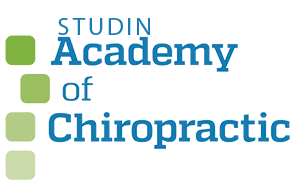
Primary Spine Care Qualification
What is Primary Spine Care?
Primary Spine care simply means being the first referral option for spine care in instances other than fracture, tumor or infection. Having a professional degree is paramount and the first step in the process, but one must not forget that any doctoral training, no matter the specialty (i.e. chiropractic, medicine, dentistry, podiatry, etc.) is the start of a provider’s educational journey and what we do with that training is up to the doctor in clinical practice.
The solution is not to prescribe more drugs in an “already over-drugged society;” the solution is being able to manage the patient in a collaborative environment on a peer level being “expert” on common healthcare issues. The underlying tenant is that there is no pharmacological solution for a mechanical spine problem (note the opiate epidemic), it is with that initial focus that allows chiropractic to assume a role that no other profession can accomplish. True Primary Spine Care Provider (PSCP) management includes being able to accurately diagnose/triage patients and the ability to use and understand MRI is a prime example.
The first healthcare provider to treat spine is of great significance. Blanchette, Rivard, Dionne, Hogg-Johnson, and Steenstra (2017) reported: “The type of first healthcare provider was a significant predictor of the duration of the first episode of compensation only during the first 5 months of compensation. When compared with medical doctors, chiropractors were associated with shorter durations of compensation and physiotherapists with longer ones. Physiotherapists were also associated with higher odds of a second episode of financial compensation. These differences raise concerns regarding the use of physiotherapists as gatekeepers for the worker’s compensation system.” (pg. 388)
Blanchette, M. A., Rivard, M., Dionne, C. E., Hogg-Johnson, S., & Steenstra, I. (2017). Association between the type of first healthcare provider and the duration of financial compensation for occupational back pain. Journal of occupational rehabilitation, 27(3), 382-392.
The clinically excellent chiropractor, in a best practice model inclusive of the literature and a business plan that includes medical primary care providers, medical specialists, urgent care centers, hospital emergency rooms, and lawyers is the ideal scenario to manage mechanical spine patients. The training, however, is very specific and goes beyond the basic level of doctoral training. Below outlines what is required to earn being “Primary Spine Care Qualified.”
1. Neurological Component of the Chiropractic Spinal Adjustment
2. MRI Spine Interpretation
3. Triaging the Injured and Collaborative Care
4. Neurology of Connective Tissue Pathology
5. Managing the Mechanical Spine Patient in Hospitals and Urgent Care Centers
6. Literature-Based Evidence & Academic Standards of Diagnosis, Prognosis and Treatment Plans for the Mechanical Spine Pain
Requirements
Step 1: Register here on the Academic Portal (free registration)
Step 2: Complete any 4 courses. Each is 12 hours of academic study in Primary Spine Care
Primary Spine Care 1
Basics of Primary Spine Care and disc pathology. In addition, the basics of the neuroanatomy of the chiropractic spinal adjustment
Primary Spine Care 2
Primary Spine Care and integration with hospitals and lawyers. The adjustment-brain connection and age dating disc herniations.

